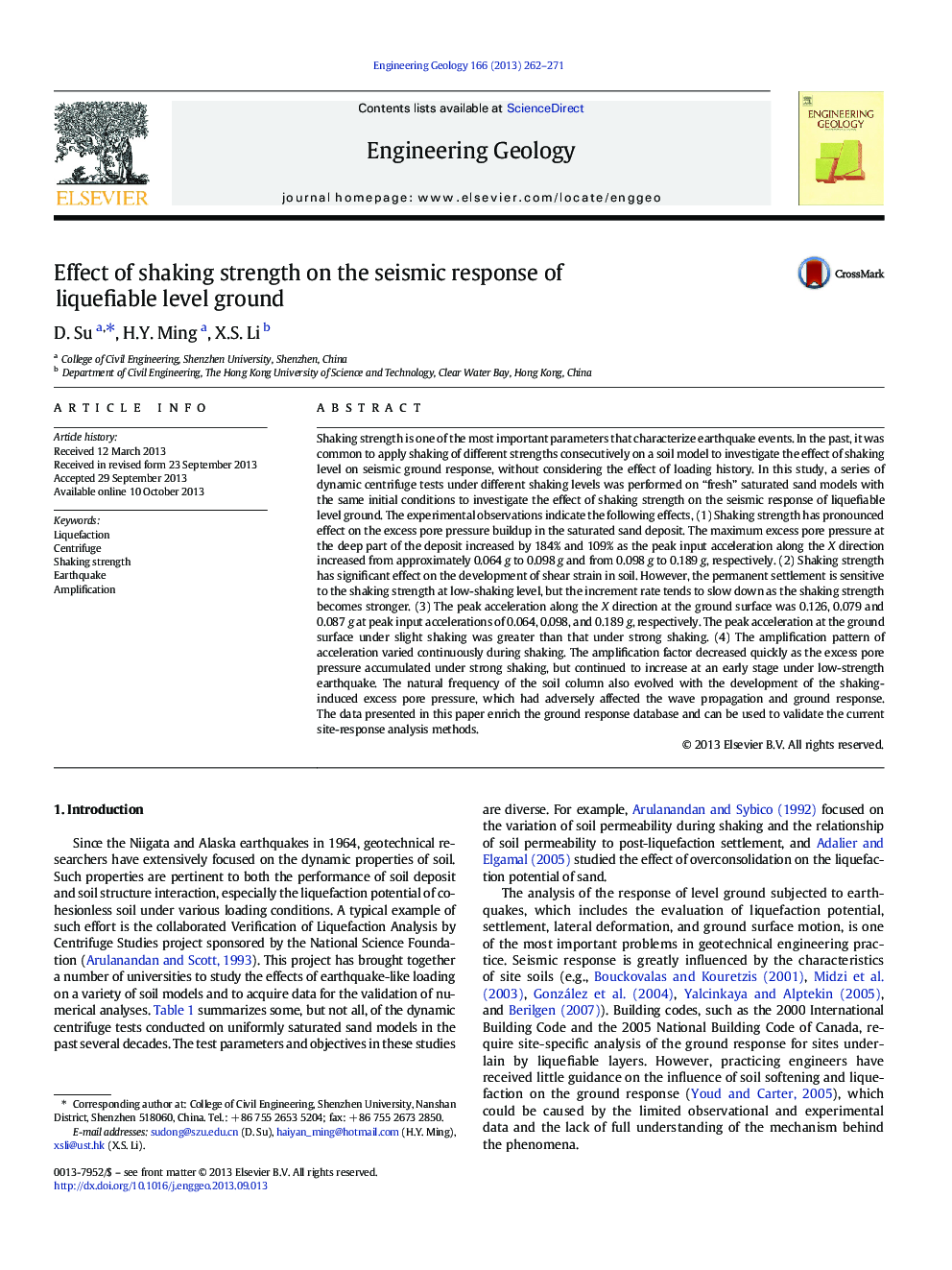| کد مقاله | کد نشریه | سال انتشار | مقاله انگلیسی | نسخه تمام متن |
|---|---|---|---|---|
| 4743813 | 1641818 | 2013 | 10 صفحه PDF | دانلود رایگان |
• Dynamic centrifuge tests on “fresh” saturated sand models were performed.
• Shaking intensity has pronounced effect on the pore pressure response.
• The ground acceleration under slight shaking was greater than that under strong one.
• Evolution of the natural frequency of the sand deposits was unveiled.
• Soil–water interaction played an important role in the seismic response.
Shaking strength is one of the most important parameters that characterize earthquake events. In the past, it was common to apply shaking of different strengths consecutively on a soil model to investigate the effect of shaking level on seismic ground response, without considering the effect of loading history. In this study, a series of dynamic centrifuge tests under different shaking levels was performed on “fresh” saturated sand models with the same initial conditions to investigate the effect of shaking strength on the seismic response of liquefiable level ground. The experimental observations indicate the following effects, (1) Shaking strength has pronounced effect on the excess pore pressure buildup in the saturated sand deposit. The maximum excess pore pressure at the deep part of the deposit increased by 184% and 109% as the peak input acceleration along the X direction increased from approximately 0.064 g to 0.098 g and from 0.098 g to 0.189 g, respectively. (2) Shaking strength has significant effect on the development of shear strain in soil. However, the permanent settlement is sensitive to the shaking strength at low-shaking level, but the increment rate tends to slow down as the shaking strength becomes stronger. (3) The peak acceleration along the X direction at the ground surface was 0.126, 0.079 and 0.087 g at peak input accelerations of 0.064, 0.098, and 0.189 g, respectively. The peak acceleration at the ground surface under slight shaking was greater than that under strong shaking. (4) The amplification pattern of acceleration varied continuously during shaking. The amplification factor decreased quickly as the excess pore pressure accumulated under strong shaking, but continued to increase at an early stage under low-strength earthquake. The natural frequency of the soil column also evolved with the development of the shaking-induced excess pore pressure, which had adversely affected the wave propagation and ground response. The data presented in this paper enrich the ground response database and can be used to validate the current site-response analysis methods.
Figure optionsDownload as PowerPoint slide
Journal: Engineering Geology - Volume 166, 8 November 2013, Pages 262–271
